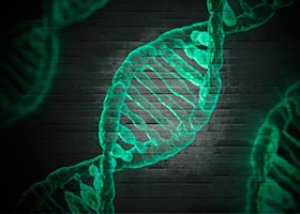
All iLive content is medically reviewed or fact checked to ensure as much factual accuracy as possible.
We have strict sourcing guidelines and only link to reputable media sites, academic research institutions and, whenever possible, medically peer reviewed studies. Note that the numbers in parentheses ([1], [2], etc.) are clickable links to these studies.
If you feel that any of our content is inaccurate, out-of-date, or otherwise questionable, please select it and press Ctrl + Enter.
DNA repair happens on a schedule
Last reviewed: 02.07.2025

Enzymatic substances that correct DNA damage are more active in performing their function before sunrise and sunset.
It is no secret that the biological clock plays an important role in the functionality of the human body. It is they who determine the quality of our sleep, the strength of our immunity, metabolism, heart function, etc. Scientists have "looked" deeper and learned that even the basic molecular mechanisms are subject to the daily rhythm.
Dr. Aziz Sancar and a team of scientists from the University of North Carolina at Chapel Hill have shown that there is a connection between circadian rhythms and DNA repair. Dr. Sancar is one of the scientists who was awarded the Nobel Prize in Chemistry in 2015 for his analysis of the molecular processes that occur when cells correct DNA damage.
DNA often undergoes mutations: chains are broken, genetic letters are replaced with incorrect ones. Therefore, it is very important that restoration occurs not only qualitatively, but also regularly.
As scientists have discovered, DNA "repair" depends on daily activity. Thus, an experiment was conducted with Cisplatin, a platinum substance that damages DNA structure when combined with it.
The experimental rodents received Cisplatin for 24 hours. At the same time, the specialists monitored which parts of the genome the recovery system would correct damage from Cisplatin. As a result, no less than two thousand genes were obtained, in which recovery occurred in different daily periods.
At the moment of RNA copy synthesis on the gene, the double-stranded DNA is unraveled, and only one strand becomes a template for RNA synthesis. Such strands are “repaired” only before sunrise or sunset, which depends on the specific gene. The other, non-transcribed strand is “repaired” shortly before sunset, regardless of the gene. During the remaining time, repair processes also take place, but they are much less active.
Most likely, the corresponding genes respond to daily changes and enter the active phase by the clock. Presumably, the stimulation of the repair system depends on the mode of genes that are in line for "repair". However, more information and additional experiments are needed to answer this question accurately.
Now many experts note the most important practical role of the information obtained. It is no coincidence that scientists used in their experiments a drug that is part of the treatment regimen for oncological pathologies.
Cisplatin destroys tumor cells by causing the very same DNA damage that causes cells to lose the ability to develop and divide. However, at the same time, the drug also damages healthy liver, kidney, and other cells. Scientists will probably be able to protect organs by using Cisplatin depending on the daily rhythms of the DNA-repairing system.
Detailed information about the study is available in PNAS (http://www.pnas.org/content/early/2018/05/01/1804493115).
 [ 1 ], [ 2 ], [ 3 ], [ 4 ], [ 5 ], [ 6 ], [ 7 ], [ 8 ], [ 9 ]
[ 1 ], [ 2 ], [ 3 ], [ 4 ], [ 5 ], [ 6 ], [ 7 ], [ 8 ], [ 9 ]
